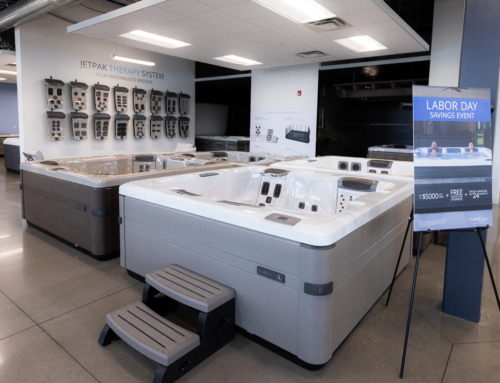How well do you understand what motivates a customer to buy your product? Are buying decisions on logic or emotion? Harvard professor Gerald Zaltman says, “95% of purchasing decisions are subconscious.” What really drives decision making, including purchasing behaviors, is emotion. In short, human beings are driven by feelings.
To be successful in sales, it’s essential to identify what emotions a spa evokes in the customer and what emotions the customer wants to get from the purchase. Let’s consider what emotionally motivates buyers and how you can improve emotional connections with your customers.
Emotional Motivators
The role of emotion in making a sale involves recognizing what motivates customers on a subconscious level, and understanding which emotional appeals are most effective in making a spa sale.
The five emotional motivators that significantly affect spa consumer behavior include:
- The desire for a sense of well-being
- The desire for ongoing self-improvement
- The desire for a sense of belonging
- The desire for a sense of freedom
- The desire to stand out from the crowd
It’s your job as a spa salesperson to build a rapport with your customers that allows you to recognize their desires. Then, you can use emotional appeals to show customers how their desire can be fulfilled with a spa purchase. Three of the most effective emotional appeals are pain alleviation, assigning deeper value, and fear of missing out.
Pain Alleviation
Anyone who experiences pain can agree that it causes unhappiness. Whether it’s physical in the form of chronic neck, back, or shoulder pain or psychological in the form of stress or anxiety, the chance to reduce pain means a chance to be happier.
Assigning Deeper Value to Products
Not only do spas offer relief from physical and psychological pain, they also provide an opportunity to spend more quality time with family and friends. Spas bring people together and allow for more meaningful connections.
FOMO
Consumers are often driven by the “fear of missing out.” By positioning your product as the best option to meet their need, solve their problem, or satisfy their desire, the fear of missing out grows stronger which encourages the customer to make the purchase.
People today are not buying spas for the same reasons they did 20 years ago–it goes well beyond just the simple pleasure of being able to soak after a long day. ~Carmen Cisterna, Ciscon Outdoor Living
According to Carmen Cisterna of Ciscon Outdoor Living in Ontario, Canada, “people today are not buying spas for the same reasons they did 20 years ago–it goes well beyond just the simple pleasure of being able to soak after a long day.” Today’s consumers are interested in spas for therapeutic uses and for technology-free family time. Understanding these motivations provides a better opportunity to successfully appeal to customers on an emotional level.
Emotional Connections Through Storytelling
One of the most effective methods of establishing an emotional connection with a customer is through storytelling. In fact, Harvard Business Review cites research showing that “stories can activate the region of the brain that processes sights, sounds, tastes, and movement.” Sharing stories of positive outcomes other customers have experienced can create the desired emotion in a current customer.
Cisterna relates this story of successfully establishing an emotional connection with a customer:
We have one client in particular who has a young family. Those with young children would understand that life gets [busier] than we ever bargained for! She was struggling to find some quiet time, and often would find excuses on why she couldn’t take 15-30 minutes of alone time to regroup on her own or with her husband. She would often see posts on our Business Social Media page on the benefits of a Spa, so she decided to reach out. It didn’t take her long to take the plunge and purchase her first Spa! Her last message to me said, “Carmen, you have no idea how your help in making this purchase has changed our lives…thank you so much for providing us with the tools to find downtime in our busy days.” It’s testimonials like that that make us smile!
Neuroscientist Antonia Damasio explains how our brains imprint emotion on every experience we have. Because of this, the hippocampus creates a strong memory of an event. In terms of storytelling, this means the more memorable the story, the larger the role it plays in the decision-making process.
The more memorable the story, the larger the role it plays in the decision-making process.
Do you have stories of how using a spa resulted in you or your customers getting better sleep, feeling more relaxed, spending more time together as a family, or experiencing relief from chronic pain? Share them with customers who desire similar effects from their spa purchase. When you use stories to empathize with your customer, you are selling how it feels to own a spa.
Emotional Connections Through Language
Another valuable tool in making emotional connections with customers is language. The right keywords, phrases, and questions allow you to steer customers towards purchasing. Words like “well-being” and “wellness” or phrases like “therapeutic value” and “overall health” subliminally reinforce that this is an important purchase. It’s also important to ask the right questions the right way.
Cisterna suggests asking the following questions during the selling process:
- Once they explain why they are interested in a spa, ask them something like “Help me understand a little bit more about how you plan to use your spa. Is it for family use, friends, pain relief in a specific area of your body?” When the specifics are narrowed down, you can focus on solutions that best meet their wants and needs.
- Specifically discuss features the client has said are important to them with phrases like “…as I know that was something that was important to you and your family.”
- Share your own personal spa stories by saying, “I know when I purchased my spa, I wish someone told me about _____” or “Our clients have told us that when _____ they experienced _____.”
- When you ask for the sale, use phrases like “Given that XYZ were important to you, and this Spa has XYZ that will help you, I would love to help finalize this important and fun investment with you–what do you think?”
Customer-centric questions along with words that invoke positive emotions help you build a relationship of trust with customers. It also establishes you as an expert who is trustworthy. Cisterna says, “When we step out of our ‘sales’ roles and make it more about helping them invest their money into something they will find value in, trust will go a long way.”
Emotional Connections Through Follow Up Emails
It’s easy for emails to come off ‘salesy’ and impersonal. Making an emotional connection in email correspondence is tricky. In addition to being “short and concise,” Cisterna offers this advice:
1. Connect to their reason for wanting to own a hot tub with these, or similar, phrases: “Thank you so much for taking the time to meet with us on Tuesday and allowing us to help you with your purchase of a spa that will help with your lower back pain/help you spend more quiet time with your spouse/reduce some of your chronic neck pain.”
2. Focus on your knowledge of the customer and resolving their issues: “By being able to customize your [spa], this will ensure we help you target your shoulder and neck pain.”
3. Let them know when you’ll be following up again: “I’ll check in with you again on May 10th, that’s a month from now, to see how you and your family are enjoying your new spa.”
The Takeaway
A Capgemini study found that “82% of consumers with high emotional engagement would always buy the brand they are loyal to when making purchasing decisions.” This study also found that “70% of consumers with high emotional engagement spend up to twice as much with those brands.” This means customers with an emotional connection are likely to visit more, buy more, and recommend you more. In the words of Teddy Roosevelt, “People don’t care how much you know until they know how much you care.”









Leave A Comment